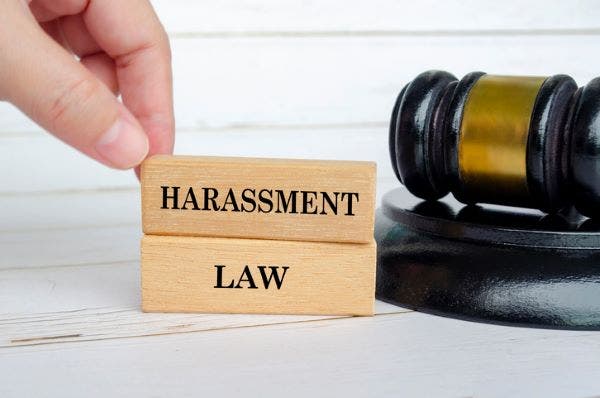What employers need to know

October marks one year since the Worker Protection (Amendment of Equality Act 2010) Act 2023, meaning all employers have a positive duty to take reasonable steps to prevent sexual harassment. Kate Kapp, Partner at Doyle Clayton sets out what employers need to do now.
In addition to the one-year anniversary of the Worker Protection (Amendment of Equality Act 2010) Act 2023, it is now a year until the preventative duty of employers will extend to “all reasonable steps” to prevent sexual harassment, and the introduction of liability for third party harassment under the Employment Rights Bill.
Whilst some employers have endeavoured to demonstrate that they have discharged their proactive duty to protect their staff, we’re already seeing the business costs of not taking steps to prevent sexual harassment in the workplace.
Image

Description
Kate Kapp, Doyle Clayton
With tech’s reputation as traditionally male dominated, its legacy “bro culture” and the power imbalance resulting from a persistent under-representation of women in leadership roles, the sector falls into the “high risk” category in terms of claims. This means employers need to escalate their commitment to protecting their people – and their business – as a priority.
The specific reasonable steps for each employer currently depends on the size and nature of the organisation, but there are a set of concrete steps you can take now:
Conduct a comprehensive workplace audit and develop a risk assessment
It goes without saying, you have to know the risks to prevent them – a step we see many employers skip. A workplace audit will enable you to identify areas of risk in your business and to develop a strategy to mitigate them.
In tech, this may mean considering intangible risks in the working environment, especially around culture – for example, do you have a “speak up” culture? Have you clearly communicated your reporting processes? How about your leadership? Are they leading by example here?
With the Equality and Human Rights Commission (EHRC) stating that an employer is unlikely to be compliant without a risk assessment, being able to demonstrate this step is non-negotiable.
Make sure your anti-harassment policy is up to date
Review and develop an effective and bespoke anti-harassment policy which adequately deals with sexual harassment and third-party harassment across all areas of your business. Even better, develop a new and bespoke stand-alone sexual harassment policy to sit alongside your anti-harassment policy. Factor in areas like hybrid working and employee communications too, making sure employees are as protected on WhatsApp as they are in the office.
Make sure all employees can access the policy by integrating it into employee communications – from your induction process through to training. You must also be able to demonstrate that you have put mechanisms in place to assist in the prevention of third-party harassment, including communications with those with whom you have a commercial relationship.
Policies alone don’t change workplace culture, but they will demonstrate your commitment to creating a safe, zero-tolerance workplace.
Shift your culture through learning
Conducting workplace culture training for all employees will ensure that your workforce knows exactly what the definition of sexual harassment in the workplace is – there must be no grey areas around “boys’ club banter” or an expected tolerance of “harmless fun.” Vitally, educate your people on what to do if they experience or witness sexual harassment so that colleagues are confident in identifying these behaviours, and in turn, able to challenge them effectively and safely. Again, a lack of knowing how to respond to potential sexual harassment can feed a culture of silence and acceptance.
Key here is ensuring your leadership fully embrace policies and learning, making sure they role model supportive and respectful behaviours and lead by example. Recent headlines of high-profile CEO dismissals show the fall-out when this process is ignored.
Encourage a system of reporting and record-keeping
Cultures of silence are complicit in fuelling sexual harassment; figures from the EHRC show that just 15% of women who experience sexual harassment in the workplace will report it to their employer. A robust reporting system not only allows all workers to report concerns anonymously or in name but makes them feel safe to do so. Work closely with your HR team to develop a report system of centralised, confidential records of all concerns raised – whether this is informally or formally.
Effective employee communication of your reporting process not only acts as a scaffolding to safeguard employees but communicates your commitment to taking complaints seriously and providing support to those who are brave enough to speak up.
Escalating complaints to investigations
It’s essential that as an organisation, you carry out comprehensive investigations when a harassment complaint is made. Every workplace investigation is different, some can be complex and challenging; it needs to be managed fairly, lawfully and considering the risk of legal complaints and longer-term reputational harm.
The benefits of engaging an external investigator are clear; not only can you access the skillset of specialist lawyers who are experts in the potential legal disputes arising from the allegations under investigation, but they can help safeguard your reputation and support damage limitation in high profile cases.
When it comes to protecting your people, you have to think beyond tick boxes to deeper cultural transformation. And while the tech sector has some distance to go, starting with these steps will naturally lead to more inclusive behaviours, more respectful attitudes, and a safer, more productive work environment – for everyone.

